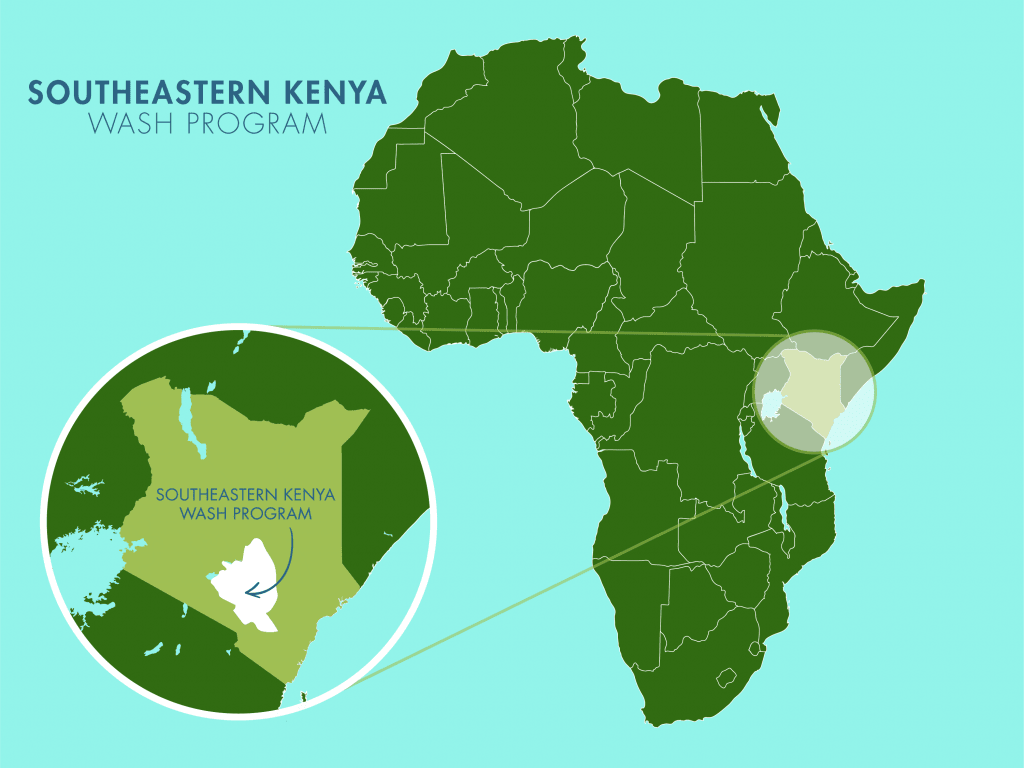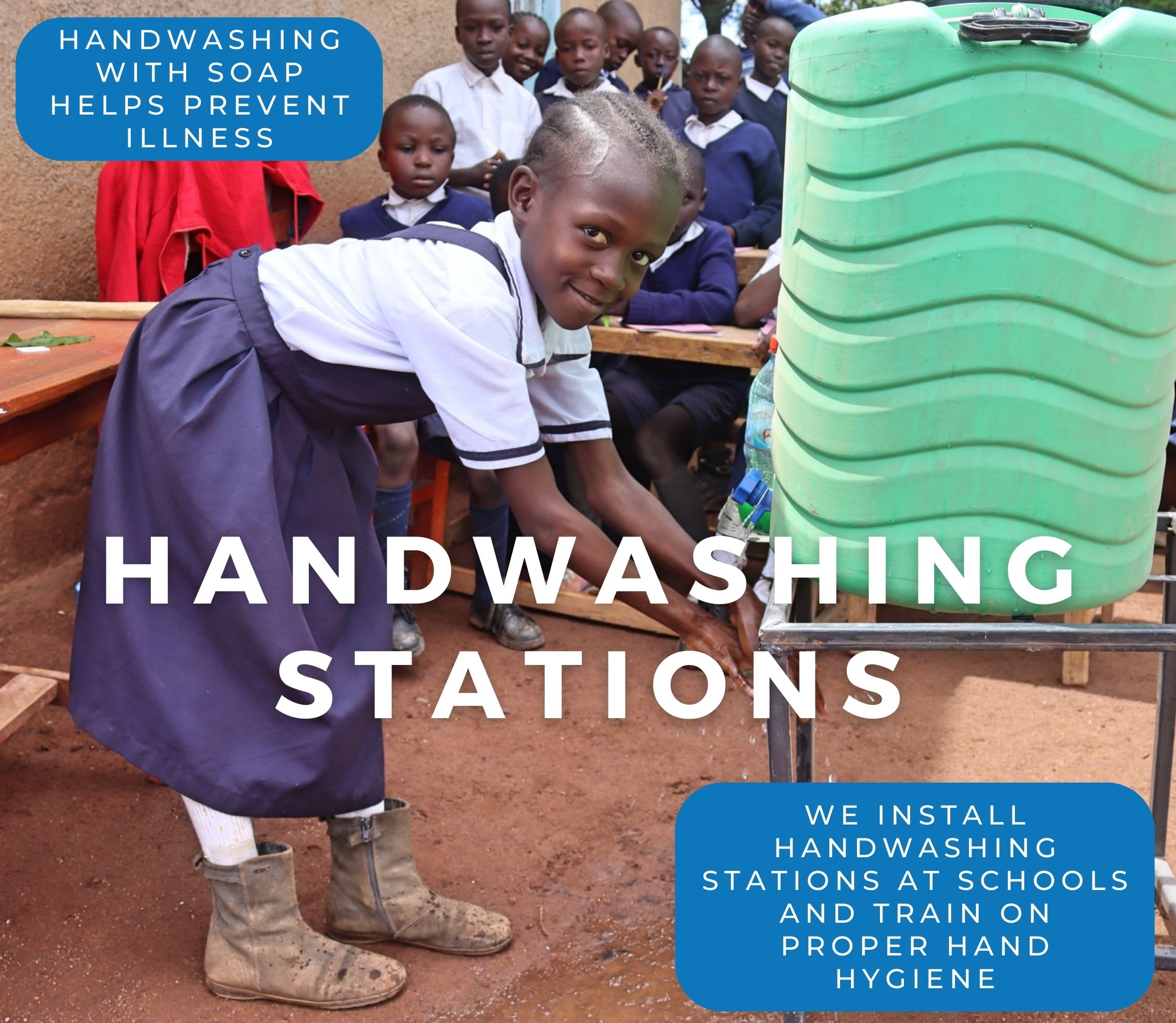St. Mary’s Thitani Girls Secondary School has 608 students and 44 staff members who are facing a serious challenge that threatens their health, hygiene, and learning: the lack of clean, reliable water on campus. The crisis is a significant burden for all to bear and interferes with the day-to-day operations of the school, affecting everyone's well-being.

Currently, the school relies on a community borehole and a small rainwater harvesting tank.
The borehole does not seem to be the solution you would hope for. Access is limited to just twice a week, and it is far away, making it time-consuming to get there and collect water. Not only that, but the water is also salty, which makes it challenging to drink and can cause stomach issues. Students waste valuable learning time collecting water that is barely drinkable when they should be in class learning. It is disheartening for everyone.
Meanwhile, the rainwater tank provides better quality water but is too small to meet the school’s needs and is only helpful during the rainy season. With no alternative sources, the school must purchase water when it can, but struggles to provide enough for daily use.

A raintank that is too small to keep up with demand.
The water issue leads to serious consequences: students lose valuable learning time, sanitation facilities are unhygienic, and the school spends a significant portion of its annual budget on water, money that could be used for books and improving the students' educational experience.

Janet.
Fifteen-year-old student Janet shared: "The water situation makes me feel very bad, but I hope one day the situation will change."
Janet is not the only one who hopes the future will be brighter. Principal Annah Kyalo, 50, holds onto hope that the future can be different.
"To me, water truly is life. It’s something I depend on every day for drinking, cooking, cleaning, and maintaining hygiene. Without clean and reliable water, even simple daily tasks become a struggle. As someone responsible for students, I see how much water affects their health, comfort, and ability to learn. When there’s enough water, our toilets stay clean, meals are prepared safely, and students can wash their hands and stay healthy. Water also brings peace of mind. It means fewer interruptions, fewer illnesses, and a better environment for everyone at school. So yes, to me, water isn’t just a resource; it’s a foundation for dignity, development, and daily life," declared Principal Kyalo.

While the critical importance of water is clear, the school remains in a fragile position, struggling to meet its basic needs and doing all it can with the limited resources it has.
"The water bills are very costly, making the school strain and forcing the parents to dig deeper into their pockets to provide money to buy water. If the school didn’t have to spend so much money on water, it would redirect those funds to areas that truly improve the quality of education and the students' lives. We could invest in better learning materials, such as textbooks, lab equipment, and teaching aids, to enhance classroom experiences," shared Ms. Mutua.
"I’d also prioritize repairing and expanding classrooms to reduce overcrowding and create a more comfortable learning environment. Additionally, we could put money into co-curricular programs like sports, music, and drama that help develop students’ talents beyond academics. Most importantly, we’d have the ability to upgrade sanitation facilities and improve the school’s infrastructure overall. Without the heavy financial strain of water bills, the school could finally focus on real growth and long-term development," she concluded.

The school could benefit from upgrades if purchasing water did not consume their budget.
To address this crisis, we plan to install a large-capacity rainwater harvesting system that will provide a consistent and reliable supply of clean water throughout the year. This will reduce the school’s financial burden, help restore proper sanitation, and create a healthier environment where students and teachers can focus on learning again. With access to safe water, the school can unlock its full potential and build a brighter future for all.
Steps Toward a Solution
Schools without reliable, on-premises water access often rely on students to fetch and carry water, leading to rationing and uncertainty about water quality. The water is typically poured into a communal storage tank and used by the entire school. With children carrying water from all different sources, it is also impossible for teachers and staff to know exactly where the water comes from and how safe it is to drink.
A new water point will be located on-premises at the school to ensure accessibility, reliability, and safety for students, teachers, and staff while meeting our school coverage goals. Having water available at the school allows children to drink, wash hands, and use sanitation facilities without leaving school grounds, preventing disruptions to lessons and reducing safety risks. A dedicated source increases water availability, reduces reliance on stored water, minimizes rationing, and ensures confidence in the safety of the water. This means staff and students are healthier, and their lessons aren’t disrupted, contributing to a better education!
Our technical experts worked with the school leadership and the local community to identify the most effective solution to their water crisis. Together, they decided to construct a rainwater harvesting system.
Rainwater Harvesting System
A rainwater collection system consists of gutters that channel rainwater effectively into large holding tanks. Attached to buildings with clean, suitable roofing, these systems are sized according to the population and rainfall patterns. Water can be stored for months, allowing for easy treatment and access. Learn more
Handwashing Stations
Alongside each water source, we install two gravity-fed handwashing stations, enabling everyone at the school to wash their hands. Handwashing is crucial for preventing water-related illnesses within the school and community. Student “health clubs” maintain the stations, fill them with water, and supply them with soap, which we often teach them how to make.
School Education & Ownership
Hygiene and sanitation training are integral to our water projects. Training is tailored to each school's specific needs and includes key topics such as proper water handling, improved hygiene practices, disease transmission prevention, and care of the new water point.
To ensure a lasting impact, we support forming a student health club composed of elected student representatives and a teacher. These clubs promote hygiene practices schoolwide and keep handwashing stations well-stocked. This student-led model encourages a sense of ownership and responsibility.
Safe water and improved hygiene habits foster a healthier future for the entire school.

 Rainwater Catchment
Rainwater Catchment
 Rehabilitation Project
Rehabilitation Project


















